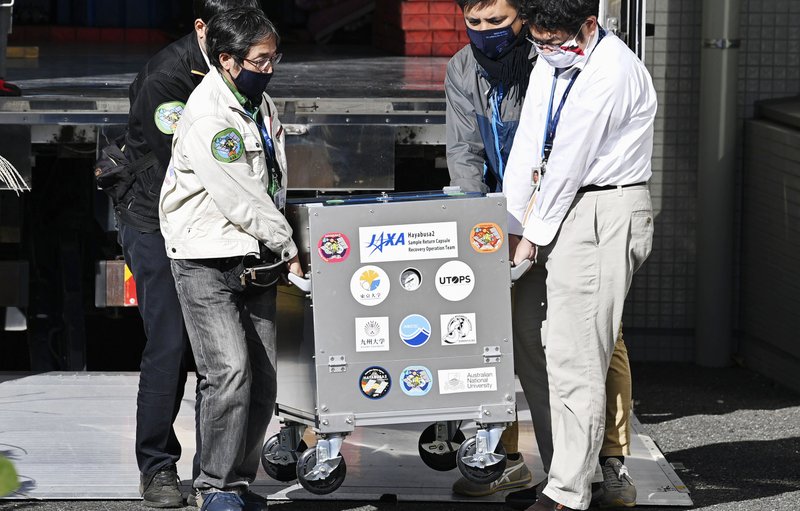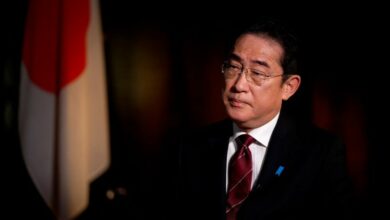
TOKYO (AP) — Japanese space agency officials were delighted Tuesday by the return of a small capsule containing asteroid soil samples obtained by their Hayabusa2 spacecraft and they are anxiously waiting to look inside after preparations are complete.
The Hayabusa2 dropped the capsule from space and it landed in the Australian Outback over the weekend. It arrived in Japan earlier Tuesday and it will soon be studied for insight into the origin of the solar system and life on Earth.
The Japan Aerospace Exploration Agency said the capsule, tightly sealed and carefully stored in a container box, arrived at its research facility in Sagamihara, near Tokyo, for curation and analysis beginning later this month.
“It’s really like a dream,” said Yuichi Tsuda, the Hayabusa2 project manager. “After 5.2 billion kilometers (3.2 billion miles) of space journey which took six years, (the capsule) has returned and now it’s here with us.”
Mission officials will have to wait until next week to look inside.
“I’m anxious to find out if the samples are really inside and how much is there,” project manager Makoto Yoshikawa said. “Otherwise, everything is perfect so far.”
At the end of its yearlong journey from asteroid Ryugu, more than 300 million kilometers (190 million miles) from Earth, Hayabusa2 released the capsule Saturday from 220,000 kilometers (136,700 miles) in space, successfully sending it to land on a targeted area in a sparsely populated desert in Australia.
The extremely high precision work at the end of Hayabusa2′s six-year mission thrilled many Japanese.
Launched in December 2014, the unmanned Hayabusa2 spacecraft touched down twice last year on Ryugu. Despite an unexpectedly rocky surface that even forced the mission’s team to revise landing plans, the spacecraft successfully collected data and soil samples from two locations — on the surface and from underground.
Scientists say the samples, especially ones taken from under the asteroid’s surface, contain data from 4.6 billion years ago unaffected by pace radiation and other environmental factors. They are particularly interested in studying organic materials in the samples to learn about how they were distributed in the solar system and if or how they are related to life on Earth.
The samples will be treated in a clean room at the Sagamihara facility to avoid any external impact, and the work is expected to start soon. After initial studies and curation in Japan, some of the samples will be shared with NASA and other international scientists for further study.
Initial inspection at a quick check facility in Australia detected unidentified gases from the capsule, a sign they are related to solar wind or Ryugu samples. JAXA will further analyze the gasses, which could provide information about organic elements and water.
Outside the JAXA’s facility in Sagamihara, senior members of the Hayabusa2 team and local fans lined up at the gate Tuesday and welcomed the arrival of the capsule, transported from the airport on a truck, some holding up a sign saying “Welcome back!”
___
Image: A small capsule dropped by Japans’ Hayabusa2 spacecraft in a container box arrives at the Japan Aerospace Exploration Agency’s research facility in Sagamihara, near Tokyo Tuesday, Dec. 8, 2020. The capsule containing asteroid soil samples that landed in the Australian Outback arrived Tuesday in Tokyo for research into the origin of the solar system and life on Earth. (Yu Nakajima/Kyodo News via AP)




